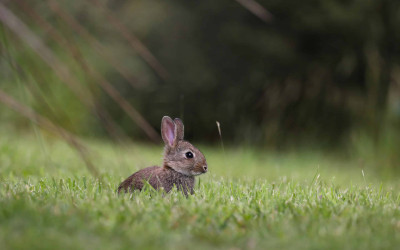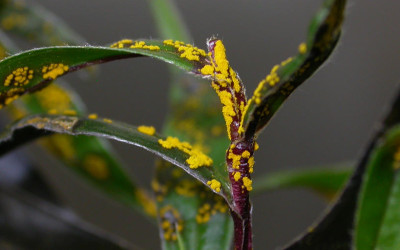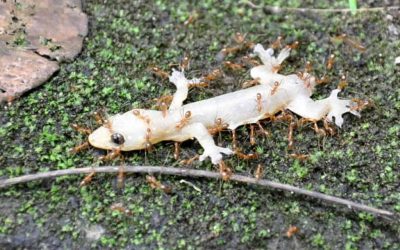MEET THE INVADERS
Gamba Grass
Gamba grass is no ordinary pasture plant – it’s now at the heart of a fierce fight to stop its spread across northern Australia.
It’s a towering, flammable grass that can grow up to 4 metres high and spreads like wildfire. That’s gamba grass.
Its seeds spread with wind or water, and it can hitch a ride on hay, vehicles and machinery.
Gamba grass has a deep root system, dense tussocks (up to 70 cm in diameter), rapid growth and prolific seed production.
In tropical Africa, where it is native, gamba grass is controlled by native grazers such as antelope and buffalo.
In its home range, fire is part of the natural rhythm – and gamba grass fits into that system without overwhelming it. But in Australia, it means hotter, more frequent fires.
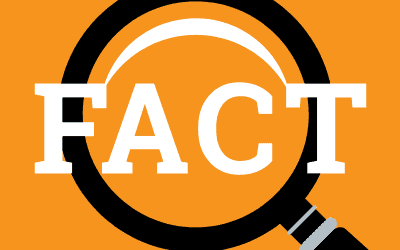
Gamba Grass fires produce flame heights that are higher than typical fires causing canopy fires that affect the whole tree crown!
Invasion story
Gamba Grass was first introduced to Australia in 1931 as a potential pasture grass.
Adaptable and hardy, gamba grass thrives in the toughest conditions like drought, fire and poor-quality soil common in northern Australian savannas.
Early trials at the Katherine Research Station in 1946 in the Northern Territory experimented with plantings, later expanding to the Berrimah Experiment Farm.
This was a time when state governments and the CSIRO (then the CSIR) were importing thousands of grass and legume species to trial for livestock grazing, many of which have also become invasive.
Large-scale plantings began in the 1980s when commercial quantities of seed became available. Praised for its ability to rapidly improve pasture productivity, it was then widely sown across northern Australia, even spread via aircraft!
But like many good ideas, it didn’t quite work out as expected.
Although the grass was productive for cattle, the advice to manage it by grazing wasn’t practical. The seeds of gamba grass were easily spread by the wind and before long, it was escaping from paddocks and into the wild. What began as a solution for farmers turned into a giant problem for others.
The grass rapidly spread, including into protected areas like Kakadu National Park.
The Northern Territory Government initiated control programs in the early 2000s, but despite these efforts, gamba grass continued to spread across northern Australia.
In 2009, gamba grass was first detected in the Northern Territory’s Litchfield National Park, home to species found nowhere else on Earth, like the Litchfield Hibiscus. As of early 2023, gamba grass had infested approximately 20% of the park, with projections that this infestation could take over 30% of the park by 2032, threatening ecosystem collapse.
Today, it is estimated that gamba grass has spread to over 1.5 million hectares of the Northern Territory, including around Darwin, Batchelor and Katherine.
It has also established in the east Kimberley region of Western Australia and across coastal and sub-coastal areas of North Queensland.
How did we get here?
In the late 90s, concern about hotter, more frequent bushfires was brewing. It didn’t take long for ecologists to sound the alarm. Research in the early 2000s demonstrated that gamba grass tripled fire intensities, reduced available soil nitrate levels by 70% and tripled grass water use.
But because some graziers valued gamba grass, politicians were initially reluctant to ban it.
Those pushing for action were up against a powerful force. Pastoralists who had planted it stood by it, pointing to its value as fast-growing cattle fodder. And with the grazing lobby holding significant political sway, early calls for bans went nowhere.
But as it became more widespread, the consequences for both people and nature of gamba-fuelled fires became harder to ignore.
The Invasive Species Council led the charge to have it declared a weed in Queensland and supported the campaign in the Northern Territory. 200 ecologists and weed scientists endorsed a gamba declaration, initiated by the Council, calling for a ban on planting and sale. Yielding to public concern, all 3 governments across the north banned gamba grass in 2008.
In 2009 gamba grass was listed as a national key threatening process and in 2012 as a weed of national significance.
In 2010, the Northern Territory government released its first gamba grass plan, which specified a zone requiring eradication and a zone requiring control.
In 2020 a second plan was released and a gamba army was established to manage gamba in protected areas and community sites. Federal funding of $9.8 million over 4 years in 2022 has boosted capacity. But despite the best efforts of many Territorians, gamba grass continues to spread.
A review of the threat abatement plan for gamba grass concluded that ‘efforts are hindered by lack of funding and resources.’
Western Australia has been fortunate that gamba grass plantings were limited, and the state is now on the cusp of eradicating it in the Kimberley.
But elsewhere, coordinated action has been slow to come.
In Queensland, despite the ban, progress has been patchy. With no coordinated state-wide management strategy or reporting, efforts are left largely to local governments and outcomes vary.
The toll on nature
Gamba grass is fast becoming a major headache for anyone working to manage the environment in the Top End. But it’s not just its sheer size or how quickly it grows that’s causing problems – it’s the way it fuels and spreads fire.
This grass is a serious threat to wildlife, homes, agriculture and even tourism.
It’s not just highly flammable; it’s seriously resilient. Gamba grass can support fires more than once a year because it bounces back quickly after burning, making it even more dangerous.
It can completely change fire patterns. Fire managers in the Northern Territory have found that gamba grass fires are far harder to control and much more dangerous than those fueled by native grasses.
These fires burn up to 8 times hotter than native grass fires and spread twice as fast, making it almost impossible for native animals to escape or find shelter.
In fact, a gamba grass fire once reached a record-breaking 43,000 kW/m, the highest intensity fire ever recorded in the Northern Territory. That’s not just high – it’s catastrophic.
These intense fires kill trees, turning savanna woodlands into gamba grasslands. They injure and kill wildlife like northern quolls and destroy their shelters, increasing their exposure to predators.
But the destruction doesn’t end with fire. Gamba grass also degrades and transforms the environment by depleting soil nutrients and lowering water availability in wetlands and streams often critical for the survival of native wildlife.
For all of these reasons, it is listed as a Weed of National Significance (WONS).
Cultural consequences
The impact this is having on Indigenous culture in places like the Northern Territory, Kimberly and remote arid Indigenous communities is profound.
When gamba grass pushes out native species this includes bush tucker and bush medicines, as well as access to sacred sites – all important to Indigenous culture and way of life.
It’s also undermining the hard work of Indigenous rangers and threatening Indigenous protected areas across northern Australia. It threatens the viability of many existing and potential carbon projects on Indigenous lands.

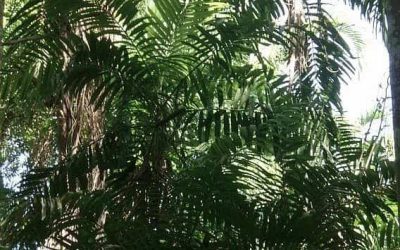
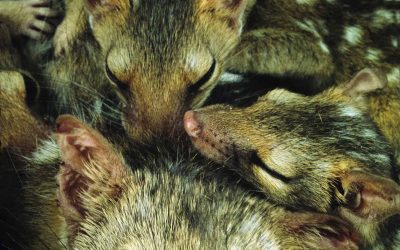
How do we fix this?
Gamba grass shows the critical need to assess the invasive risks of plants before allowing them to be planted. It is the most serious of dozens of pasture plants in northern Australia that have become invasive.
Unfortunately, some graziers continue to defend the use of gamba grass, seeing it as a useful pasture grass despite the mounting evidence of its harm.
The Invasive Species Council has been long advocating for stronger measures to control gamba grass. More funding is needed to fully implement the weed and threat abatement plans – to contain, eradicate (where feasible) and control it, to avert ecosystem collapse in Litchfield National Park and to investigate biological control options.
This will require a collaborative effort between governments, local communities, Indigenous groups and environmental organisations.
Gamba grass is one escaped plant of many!

As concerned citizens, we all have a role to play:
Educate yourself and others: Share this profile with others so more people understand why it’s such a dangerous plant.
Get involved locally: If you’re from the NT or Qld join local efforts to control gamba grass, whether that’s through volunteering or participating in local education programs. Many regional groups across northern Australia work on weed control. You can search for your local group via Landcare Australia or Bushcare Australia.
FAQs
Gamba grass increases fire intensity and displaces native vegetation, leading to habitat degradation and the decline of native wildlife.
Gamba grass was brought to Australia as one of thousands of potential pasture plants – as part of a push to replace vast swathes of native grasslands with more productive food for cattle. This was before any concern about environmental weeds. A requirement for weed risk assessment for imported plants came only in 1997.
Control methods include fire management, chemical herbicides and mechanical removal. Long-term solutions focus on restoring native plant species and managing fire regimes.
Gamba grass is invasive in northern Australia, particularly in Queensland and the Northern Territory.
Australian Government Department of Agriculture, Water and the Environment. (n.d.). Andropogon gayanus (gamba grass). Retrieved from https://profiles.ala.org.au/opus/weeds-australia/profile/Andropogon%20gayanus
Northern Territory Government. (2022). Protecting people and the environment: Containing and eradicating dangerous gamba grass infestations in the Northern Territory.
Setterfield, S. A., Rossiter-Rachor, N. A., & Adams, V. M. (2018). Navigating the fiery debate: The role of scientific evidence in eliciting policy and management responses for contentious plants in northern Australia. Retireved from https://doi.org/10.1071/PC18028
Williams, G. & McLellan, L. (2022). The ecological consequences of invasive grasses on fire regimes in Australia. Journal of Environmental Management. Available at: https://doi.org/10.1016/j.jenvman.2022.116785
Invasive Species Council. (2008). Queensland bans gamba grass: Feral Herald, Volume 1, Issue 18.
Australian Government Department of Climate Change, Energy, the Environment and Water. (2023). Northern Australia Introduced Grasses. Retrieved from https://www.dcceew.gov.au/sites/default/files/env/pages/99dfad7e-9feb-4da1-826b-fdf5740ffa5e/files/northern-australia-introduced-grasses.pdf
Country Needs People. (2023). Gamba grass: A massive threat to biodiversity, safety and culture. Retrieved from https://www.countryneedspeople.org.au/gamba_grass_massive_threat_to_biodiversity_safety_and_culture
Rossiter, N. A., et al. (2003). Gamba grass and fire intensity in northern Australia. Pacific Conservation Biology, 24(3), 318-328. https://doi.org/10.1046/j.1472-4642.2003.00020.x
Setterfield, S. A., et al. (2010). Impact of gamba grass on fire regimes and biodiversity in northern Australia. Pacific Conservation Biology, 24(3), 318-328. https://doi.org/10.1111/j.1472-4642.2010.00688.x
Chaseling, O. (2023, February 26). Report recommends urgent expansion of gamba grass eradication zone as Litchfield National Park faces growing threat. ABC News. https://www.abc.net.au/news/2023-
Department of Environment, Parks and Water Security. (2021, November). Cycas armstrongii. Northern Territory Government. https://nt.gov.au/__data/assets/pdf_file/0017/208430/cycas-armstrongii.pdf
Northern Territory Department of Environment, Parks and Water Security. (2021). Cycas armstrongii.
Department of Climate Change, Energy, the Environment and Water (DCCEEW) 2021, Threat abatement plan to reduce the impacts on northern Australia’s biodiversity by the five listed grasses: Review 2012–2021, Australian Government, Canberra, viewed 15 April 2025, https://www.dcceew.gov.au/sites/default/files/documents/tap-reduce-impacts-northern-australias-biodiversity-five-listed-grasses-review-2012-2021.pdf.
Lonsdale, WM 2004, ‘Predicting the spread of invasive species: the influence of environmental resistance, propagule pressure and the Allee effect’, in B Sindel & S Johnson (eds), Proceedings of the 14th Australian Weeds Conference, Wagga Wagga, NSW, 6–9 September 2004, Weed Society of New South Wales, Sydney, pp. 168–171, viewed 15 April 2025, https://caws.org.nz/old-site/awc/2004/awc200411681.pdf.
Department of Climate Change, Energy, the Environment and Water (DCCEEW) 2021, Threat abatement plan to reduce the impacts on northern Australia’s biodiversity by the five listed grasses: Review 2012–2021, Australian Government, Canberra, viewed 15 April 2025, https://www.dcceew.gov.au/sites/default/files/documents/tap-reduce-impacts-northern-australias-biodiversity-five-listed-grasses-review-2012-2021.pdf.
Australian Government Department of Agriculture, Water and the Environment. (n.d.). Andropogon gayanus (gamba grass). Retrieved from https://profiles.ala.org.au/opus/weeds-australia/profile/Andropogon%20gayanus
Northern Territory Government. (2022). Protecting people and the environment: Containing and eradicating dangerous gamba grass infestations in the Northern Territory.
Setterfield, S. A., Rossiter-Rachor, N. A., & Adams, V. M. (2018). Navigating the fiery debate: The role of scientific evidence in eliciting policy and management responses for contentious plants in northern Australia. Retireved from https://doi.org/10.1071/PC18028
Williams, G. & McLellan, L. (2022). The ecological consequences of invasive grasses on fire regimes in Australia. Journal of Environmental Management. Available at: https://doi.org/10.1016/j.jenvman.2022.116785
Invasive Species Council. (2008). Queensland bans gamba grass: Feral Herald, Volume 1, Issue 18.
Australian Government Department of Climate Change, Energy, the Environment and Water. (2023). Northern Australia Introduced Grasses. Retrieved from https://www.dcceew.gov.au/sites/default/files/env/pages/99dfad7e-9feb-4da1-826b-fdf5740ffa5e/files/northern-australia-introduced-grasses.pdf
Country Needs People. (2023). Gamba grass: A massive threat to biodiversity, safety and culture. Retrieved from https://www.countryneedspeople.org.au/gamba_grass_massive_threat_to_biodiversity_safety_and_culture
Rossiter, N. A., et al. (2003). Gamba grass and fire intensity in northern Australia. Pacific Conservation Biology, 24(3), 318-328. https://doi.org/10.1046/j.1472-4642.2003.00020.x
Setterfield, S. A., et al. (2010). Impact of gamba grass on fire regimes and biodiversity in northern Australia. Pacific Conservation Biology, 24(3), 318-328. https://doi.org/10.1111/j.1472-4642.2010.00688.x
Chaseling, O. (2023, February 26). Report recommends urgent expansion of gamba grass eradication zone as Litchfield National Park faces growing threat. ABC News. https://www.abc.net.au/news/2023-
Department of Environment, Parks and Water Security. (2021, November). Cycas armstrongii. Northern Territory Government. https://nt.gov.au/__data/assets/pdf_file/0017/208430/cycas-armstrongii.pdf
Northern Territory Department of Environment, Parks and Water Security. (2021). Cycas armstrongii.
Department of Climate Change, Energy, the Environment and Water (DCCEEW) 2021, Threat abatement plan to reduce the impacts on northern Australia’s biodiversity by the five listed grasses: Review 2012–2021, Australian Government, Canberra, viewed 15 April 2025, https://www.dcceew.gov.au/sites/default/files/documents/tap-reduce-impacts-northern-australias-biodiversity-five-listed-grasses-review-2012-2021.pdf.
Lonsdale, WM 2004, ‘Predicting the spread of invasive species: the influence of environmental resistance, propagule pressure and the Allee effect’, in B Sindel & S Johnson (eds), Proceedings of the 14th Australian Weeds Conference, Wagga Wagga, NSW, 6–9 September 2004, Weed Society of New South Wales, Sydney, pp. 168–171, viewed 15 April 2025, https://caws.org.nz/old-site/awc/2004/awc200411681.pdf.
Department of Climate Change, Energy, the Environment and Water (DCCEEW) 2021, Threat abatement plan to reduce the impacts on northern Australia’s biodiversity by the five listed grasses: Review 2012–2021, Australian Government, Canberra, viewed 15 April 2025, https://www.dcceew.gov.au/sites/default/files/documents/tap-reduce-impacts-northern-australias-biodiversity-five-listed-grasses-review-2012-2021.pdf.






